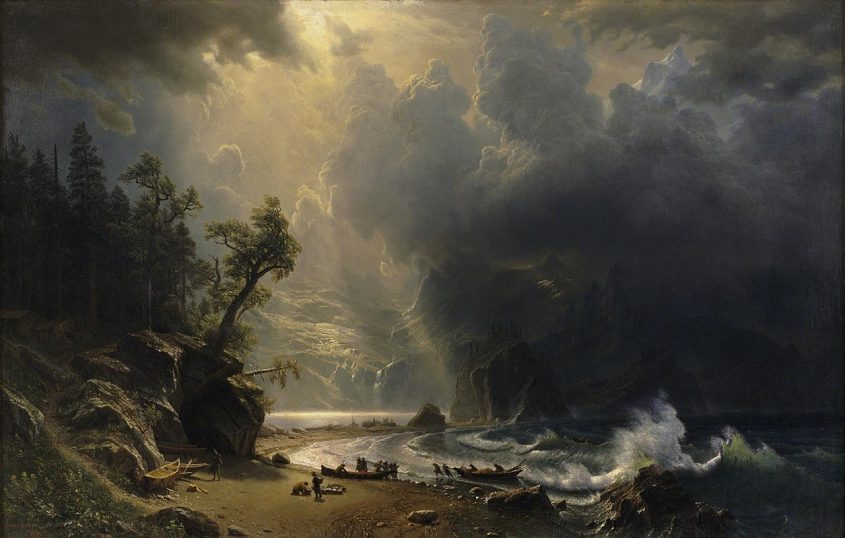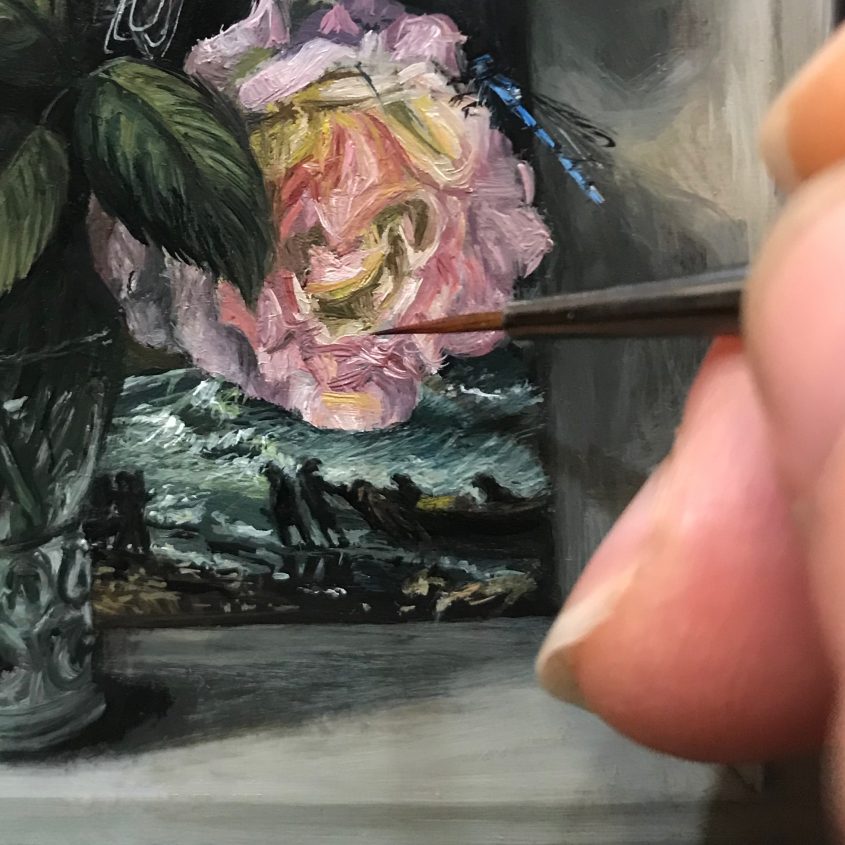Gifts of Summer, finding gratitude in difficult times
Sometimes inspiration comes from distant shores or precious objects, but for me, most comes from the world outside my window. In my backyard garden I find plants and creatures that add meaning to my life, remind me of my community, and inspire my work.
I just reached the fourteenth anniversary of moving to my house. It came with four fruit trees, a half dead lilac, and rhubarb plant. The rest was grass, weeds and more weeds. Now hundreds of plants grow in the garden where I designed and built 14 tons of slate walls and paths, with the help of some very kind friends.
Central to my garden’s design was a prolific cherry tree. Although it came with a forked trunk and showed some evidence of rot, we cared for it as best we could. It started to lean more this spring, yet it also produced more fruit this year than it has for many years past, which encouraged us. The cherries on this tree have always brought so many wonderful visitors to nibble on cherries, which are neither too sweet nor too tart. Each year brings a new surprise bird: last year a huge pileated woodpecker gorging on cherries, and this year several vibrant yellow and red Western Tanagers. I’ve never seen these timid birds in the yard before, and I was able to photograph them from my bedroom window.
Two days after the photos were taken however, we woke to find that overnight, the leaning tree had become the laying-on-the-ground tree. We didn’t hear a thing, but just like that it was gone! Luckily we had a cold spell and over the next two days, I went through the branches and saved all the cherries I could. It was a surprisingly huge amount, since I could easily reach all the branches!
Some of those cherries are here in my painting, beautifully paired with a vibrant yellow porcelain from the Seattle Art Museum. This bowl is one of a pair recently installed at the Seattle Asian Art Museum in Volunteer Park (hopefully soon to reopen!). When I held these bowls during their installation, they immediately reminded me of a piece I got to know early in my career at SAM.
Many years ago, I made mounts for the Porcelain Room, and I handled hundreds of fine porcelains (just about everything had a custom mount for earthquake mitigation purposes). I would carefully pick up each object and take it to my work table to fit for its mount. I picked up a bowl that was one of a pair, remarkably similar to the yellow bowls but glazed blue. I stopped halfway to my table in surprise. I could feel it. After holding hundreds of pieces in my hands, I could feel absolute perfection. The yellow bowls have the same breathtaking feeling of quality, and are identical as far as I can tell, which is quite a feat for a handmade piece!
Every other detail of the painting is special to me in some way. The dragonfly visits me almost daily in my vegetable patch, flying in precise yet economical loops. The pink poppy I grew from seeds originally gathered almost 10 years ago from my neighbor’s yard. I grow poppies because my dad grew poppies, and his dad before him. The delicious orange orange raspberries come from plants given to me by the talented artist, Rachel Maxi. And last but not least, Isaac found a weed on a recent hike that he picked for me to put in my next painting. I treasure his involvement and interest, and his selection balanced out the yellow in the composition nicely. Plus, how could I resist his imploring little face!

In these times of social distance and other disconnection, I hope you can look around and enjoy your own personal gifts of summer. Please enjoy this month’s painting, keep well, and enjoy the sunshine!
BOWL
| 1723-35, Porcelain with yellow overglaze height 2 5/16 in., diameter 4 in., Gift of Mrs. John C. Atwood, Jr., 70.37.1 Photo: Paul Macapia From the Seattle Art Museum website: Colored wares require a second firing at a lower temperature to fuse the enamels to the transparent porcelain glaze beneath. They distinctly reflect the imperial taste for exquisite design and potting. The combination of white interior and yellow exterior is a color code for wares made for the first-rank concubine, as specified in the Regulations of the Palace of the Qing Dynasty. |
 |


























